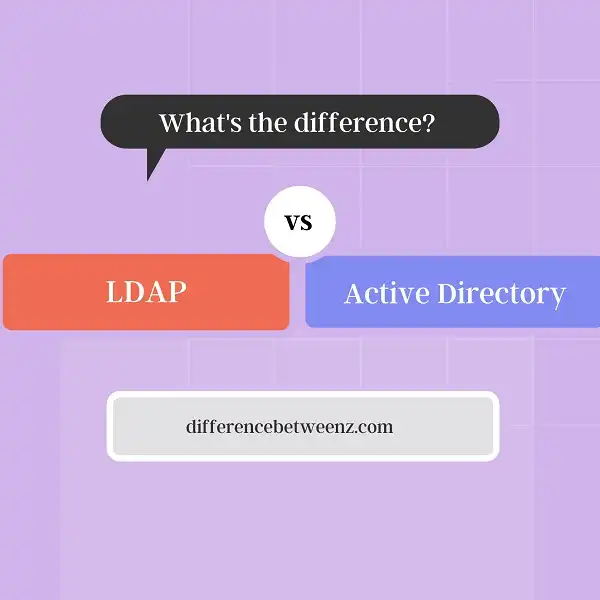When it comes to directory services, LDAP and AD are two of the most common options. However, many people don’t know the difference between LDAP and AD. In this blog post, we’ll take a look at the key differences between these two options. We’ll also explore some of the benefits of each option.
What is LDAP?
LDAP, or Lightweight Directory Access Protocol, is a protocol used for accessing information stored in databases and directories. As an open standard, LDAP allows developers to create applications that can retrieve and modify data from remote systems. This makes LDAP a key tool for systems management, as well as a valuable resource for organizations of all sizes. Additionally, because it is lightweight in nature, LDAP is incredibly efficient and scalable. Whether you are looking to store employee data or customer records, LDAP can help you access and organize this information easily and effectively.
What is Active Directory?
Active Directory (AD) is a Microsoft technology used to manage computer networks, as well as applications and security. It is a central location for storing all the information about an organization’s network infrastructure. This includes user accounts, computer accounts, application settings, and security settings. Active Directory can be used to create and manage Active Directory Domains. Active Directory Domain Services (AD DS) is a role in Active Directory that allows administrators to manage domain resources, such as user accounts, groups, and computers. Active Directory Federation Services (AD FS) is a component of Active Directory that allows organizations to share identity information between Active Directory domains. Active Directory Certificate Services (AD CS) is a role in Active Directory that allows administrators to manage digital certificates. Active Directory Lightweight Directory Services (AD LDS) is a component of Active Directory that allows organizations to store directory data in Lightweight Data Interchange Format (LDIF).
Difference between LDAP and Active Directory
LDAP (Lightweight Directory Access Protocol) and Active Directory (AD) are both types of directory services that can be used to store and manage information about users, computers, and other resources on a network. LDAP is a standards-based protocol that can be used with any type of directory, while AD is a service developed by Microsoft that is based on LDAP. LDAP is typically used to store information such as names and contact information, while AD can be used to store additional information such as user passwords and group membership. LDAP is generally simpler to configure than AD, but AD provides more features and integration with other Microsoft products.
Conclusion
While LDAP and Active Directory are both directory services, they differ in a few key ways. LDAP is an open standard that is vendor-neutral, while Active Directory is a Microsoft product. Additionally, Active Directory integrates with other Microsoft products such as Exchange and SharePoint, while LDAP does not. If you are looking for a directory service that will work well with other Microsoft products, then Active Directory may be the better option for you. However, if you are looking for a more versatile and affordable solution, LDAP may be the better choice.


